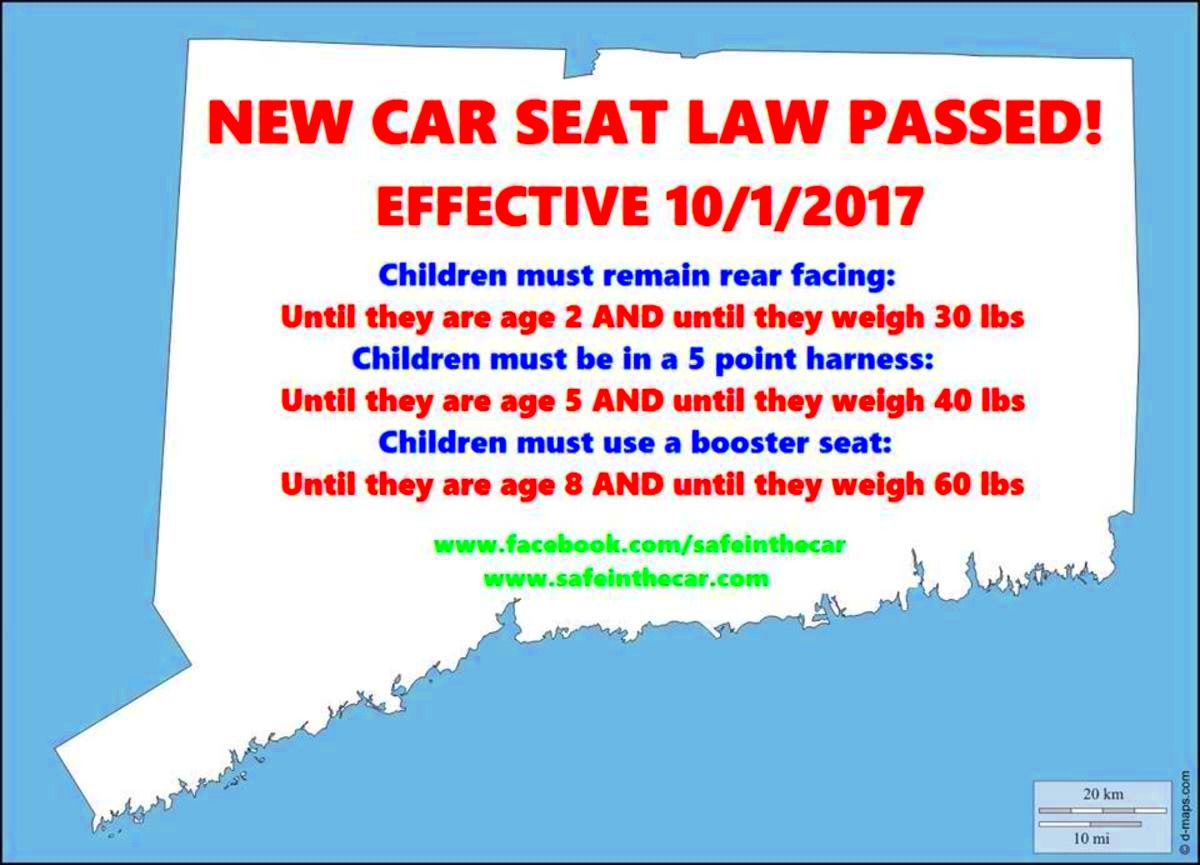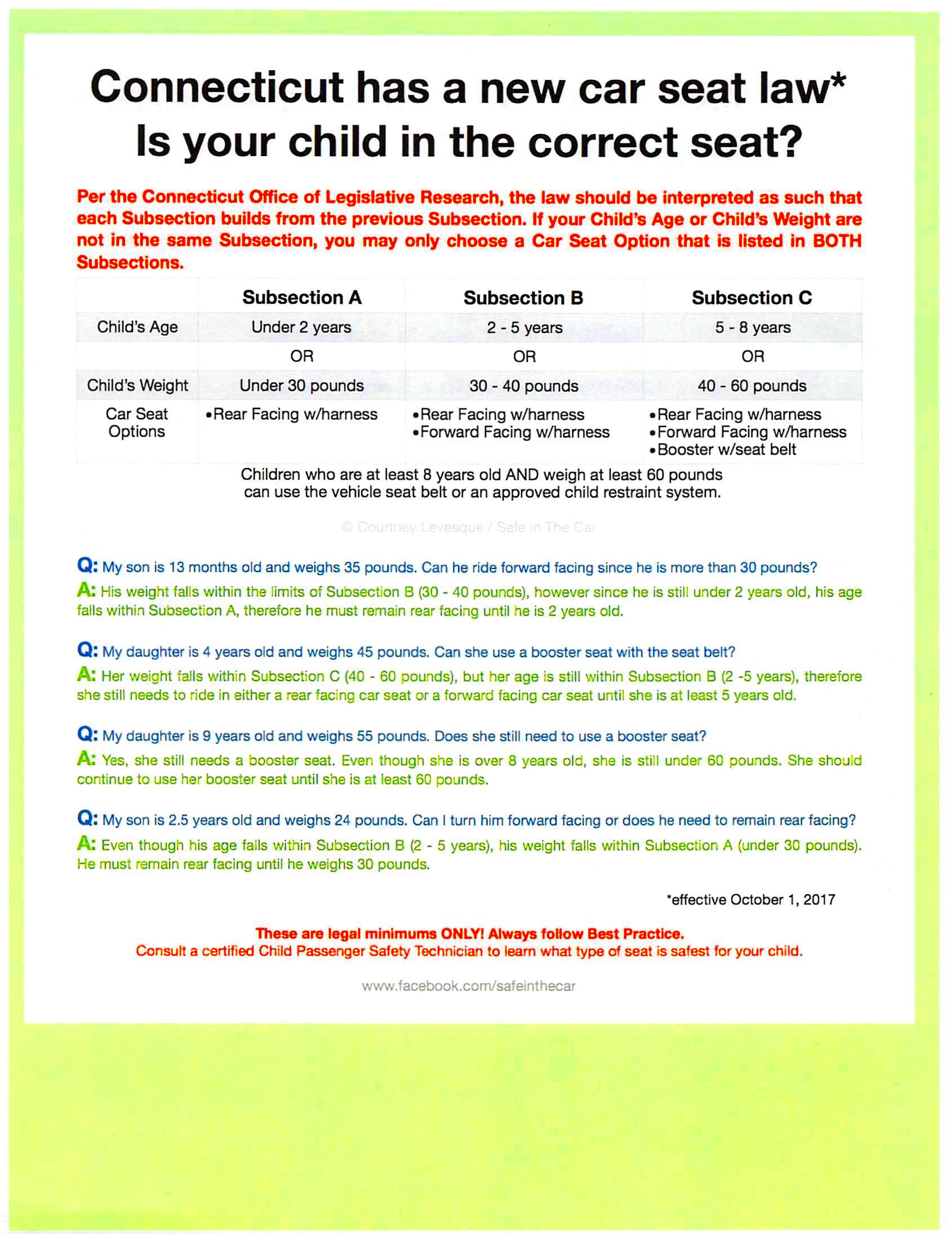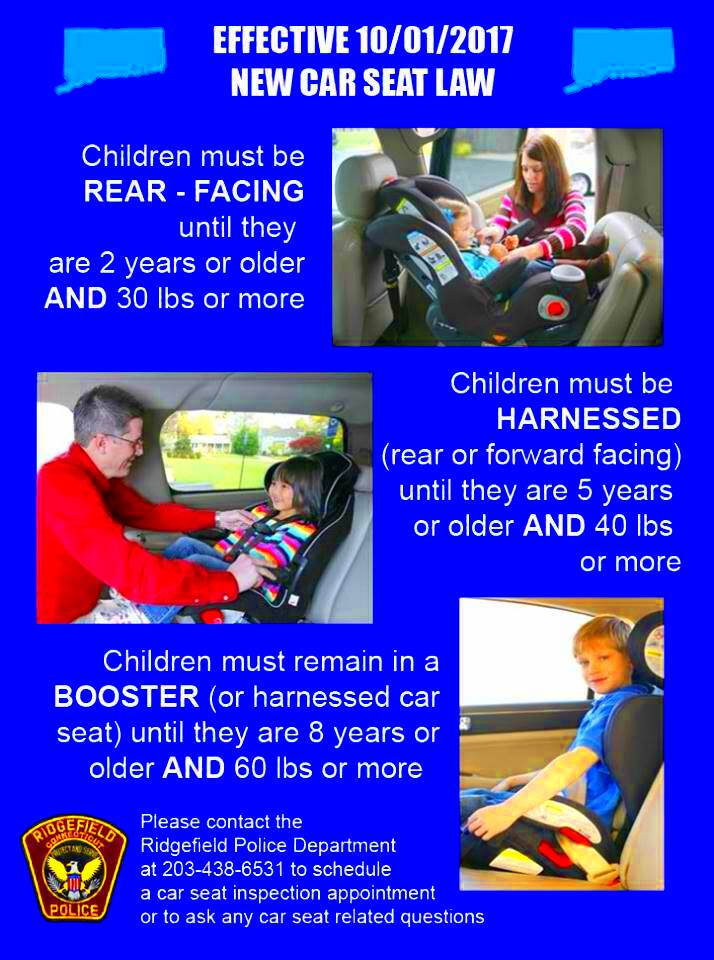Connecticut Car Seat Laws Overview
Connecticut has established car seat laws to ensure the safety of children while traveling in vehicles. These laws are designed to protect young passengers by setting specific guidelines on how they should be secured in a car. Understanding these laws is crucial for parents and caregivers to ensure compliance and, most importantly, the safety of their children. In this blog post, we’ll explore the various aspects of Connecticut car seat laws, including age and weight requirements, the different types of car seats available, and how to use them properly.
Age and Weight Requirements for Car Seats

In Connecticut, car seat laws specify requirements based on a child’s age and weight. Here’s a quick breakdown:
- Infants (Birth to 2 years): Must use a rear-facing car seat until they reach the age of 2 or exceed the height and weight limit set by the car seat manufacturer.
- Children (Ages 2 to 4): Should remain in a rear-facing seat as long as possible. If they outgrow it, they can transition to a forward-facing car seat with a harness.
- Children (Ages 4 to 8): Must use a forward-facing car seat with a harness until they reach the weight limit. After that, they should switch to a booster seat.
- Children (Ages 8 to 16): Should use a booster seat until they can properly fit in the vehicle’s seat belt, typically when they are 4 feet 9 inches tall.
These age and weight requirements help ensure that children are safely secured in a vehicle, reducing the risk of injury in the event of an accident.
Types of Car Seats and Their Uses

When it comes to car seats, there are several types, each designed for specific stages of a child’s growth. Understanding these types is essential for choosing the right one for your child:
| Type of Car Seat | Age Range | Usage |
|---|---|---|
| Rear-Facing Car Seat | Birth to 2 years | Best for infants and young toddlers. Provides the best protection for their heads and necks. |
| Forward-Facing Car Seat | 2 to 4 years | Used once a child outgrows the rear-facing seat. Provides a 5-point harness for safety. |
| Booster Seat | 4 to 8 years | Raises the child so that the seat belt fits properly across their body. |
| Seat Belt | 8 to 16 years | Used once the child is tall enough for the seat belt to fit correctly without a booster. |
Each type of car seat plays a crucial role in protecting children during car travel. It’s important to follow the guidelines to ensure that children remain safe and secure on the road.
Installation Guidelines for Car Seats

Installing a car seat correctly is essential for ensuring your child’s safety while traveling. Here are some straightforward guidelines to follow when installing a car seat:
- Read the Manual: Always start by reading both your car seat manual and your vehicle’s owner manual. They contain vital information on how to install the seat correctly.
- Choose the Right Location: The safest place for a car seat is in the back seat, away from active airbags. Center positions are often the safest spot.
- Check for Level: Most car seats have a level indicator. Ensure that the seat is level with the ground to provide the best protection.
- Use the Right Installation Method: You can install the seat using either the seat belt or the LATCH system (Lower Anchors and Tethers for Children). Make sure it is tight and doesn’t move more than an inch at the base.
- Secure Tether Straps: For forward-facing seats, use the top tether strap. This extra security helps prevent the seat from tipping forward in a crash.
Taking the time to install the car seat correctly can make a huge difference in protecting your child during a car ride. If you’re unsure, many local organizations offer free car seat checks to ensure everything is secure.
Common Mistakes to Avoid When Using Car Seats

Even with the best intentions, parents sometimes make mistakes when it comes to car seats. Here are some common pitfalls to avoid:
- Incorrect Harnessing: Ensure that the harness fits snugly against your child’s body. A good rule of thumb is the “pinch test”: you shouldn’t be able to pinch any excess harness material.
- Using an Expired Car Seat: Car seats have expiration dates due to wear and tear. Always check for an expiration date to ensure your seat is safe.
- Incorrect Angle: Rear-facing seats should be installed at a specific angle to prevent the child’s head from flopping forward. Check the manual for the correct angle.
- Switching Too Soon: Children should remain in their car seat for as long as possible before transitioning to the next stage. Don’t rush the process!
- Not Using a Booster Seat: Children who have outgrown their car seats should use a booster until the seat belt fits correctly across their lap and shoulder.
Avoiding these mistakes can significantly enhance your child’s safety while traveling. Regularly reviewing car seat guidelines can keep everyone safe on the road.
How to Properly Secure Your Child in a Car Seat
Securing your child in a car seat properly is crucial for their safety. Here’s a step-by-step guide to make sure you’re doing it right:
- Prepare the Car Seat: Ensure that the car seat is securely installed according to the guidelines mentioned earlier.
- Place Your Child in the Seat: Gently lift your child and place them in the car seat, making sure they are sitting all the way back against the seat.
- Adjust the Harness: Pull the harness straps over your child’s shoulders and buckle the harness. The chest clip should be at armpit level.
- Check the Fit: Ensure the straps are snug. You shouldn’t be able to pinch any slack in the harness. If you can, tighten the straps until they fit snugly.
- Use a Blanket or Coat Carefully: Avoid using thick coats or bulky clothing under the harness. Instead, you can place a blanket over your child after they are secured.
- Final Safety Check: Give a final check to ensure everything is secure, including the buckles and the position of the chest clip.
Following these steps will help ensure that your child is safe and secure in their car seat during every journey. Regularly reviewing these practices can provide peace of mind while you’re on the road.
Importance of Following Car Seat Laws
Following car seat laws is not just a legal obligation; it’s a crucial aspect of keeping your child safe while traveling. These laws are established based on extensive research and statistics that highlight the risks involved in car travel for young passengers. Here’s why adhering to these laws is so important:
- Enhanced Safety: Properly secured children are less likely to be injured in the event of an accident. Car seats are designed to absorb impact and protect fragile bodies.
- Reduced Risk of Fatalities: According to research, the use of appropriate car seats can significantly reduce the risk of serious injury and fatalities among young children.
- Legal Compliance: Not following car seat laws can lead to fines and legal consequences. It’s best to avoid unnecessary trouble by adhering to the guidelines.
- Setting a Good Example: By following car seat laws, parents teach children the importance of safety and the rules of the road, instilling good habits from an early age.
- Peace of Mind: Knowing that you’re doing everything possible to protect your child allows you to focus on the road rather than worrying about their safety.
In summary, car seat laws are there for a reason. They help ensure the safety of our most vulnerable passengers, giving parents and caregivers peace of mind while traveling.
Resources for Parents and Caregivers
Being a parent comes with a lot of responsibilities, and understanding car seat laws is one of them. Fortunately, there are plenty of resources available to help parents and caregivers navigate these important safety measures:
- Connecticut Department of Transportation: Offers comprehensive guidelines and information about car seat laws specific to Connecticut.
- Safe Kids Worldwide: This organization provides tips and resources on car seat safety, including installation guides and safety checks.
- Local Car Seat Inspection Stations: Many communities offer free car seat inspections where certified technicians can help ensure your car seat is installed correctly.
- Online Tutorials: Websites and YouTube channels dedicated to child safety often provide visual guides on how to install car seats properly.
- Parenting Groups: Joining local parenting groups or online forums can be a great way to share experiences and learn from others about car seat safety.
These resources can provide valuable information and support, helping parents make informed decisions about their child’s safety while traveling.
FAQs About Connecticut Car Seat Laws
When it comes to car seat laws, many parents have questions. Here are some frequently asked questions to help clarify common concerns:
| Question | Answer |
|---|---|
| What is the law regarding rear-facing car seats? | Children must be in a rear-facing car seat until they are at least 2 years old or exceed the height and weight limit of the seat. |
| Can I use a second-hand car seat? | It’s best to avoid second-hand car seats unless you know their history, including expiration dates and whether they’ve been in an accident. |
| What if my child is over the weight limit for their car seat? | Children should transition to the next type of car seat only when they exceed the weight limit. Always follow the manufacturer’s guidelines. |
| Are booster seats required in Connecticut? | Yes, children who have outgrown their forward-facing car seat must use a booster seat until they fit properly in a seat belt. |
| How can I ensure my car seat is safe? | Regularly check the installation and harnessing, follow guidelines, and consider having your seat inspected by a professional. |
These FAQs can help clarify some common questions regarding car seat laws in Connecticut. Always remember to stay informed and prioritize safety!
Conclusion on Connecticut Car Seat Laws
In conclusion, understanding and following Connecticut car seat laws is essential for ensuring the safety of our children during car travel. These laws are designed to protect young passengers by providing clear guidelines on age, weight, and type of car seat to use. By adhering to these regulations, parents not only fulfill their legal responsibilities but also significantly reduce the risk of injury in the event of an accident. Always remember to regularly check your car seat’s installation and make use of available resources to stay informed. Prioritizing your child’s safety on the road is a commitment that can make all the difference in ensuring they arrive at their destination safely.


